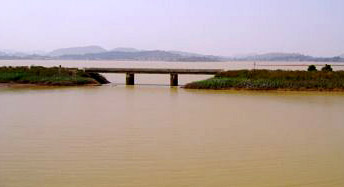 The Kolab originates from the Sinkaran hills of the Eastern Ghats in Koraput districts. The river covers a catchment area of 20400 sq. kms. The Gupteswar Temple is an important pilgrimage along the river. This temple is the cave shrine of Lord Shiva positioned on a lime stone hill on the bank of river Kolab, surrounded by superb natural scenery. The sacred "Lingam" is called Gupteswar, literally meaning, "Hidden God", is also generally known as "Gupta Kedar" in Chhatisgarh. Shivratri is the major festival, which attracts a great number of visitors.
The Kolab originates from the Sinkaran hills of the Eastern Ghats in Koraput districts. The river covers a catchment area of 20400 sq. kms. The Gupteswar Temple is an important pilgrimage along the river. This temple is the cave shrine of Lord Shiva positioned on a lime stone hill on the bank of river Kolab, surrounded by superb natural scenery. The sacred "Lingam" is called Gupteswar, literally meaning, "Hidden God", is also generally known as "Gupta Kedar" in Chhatisgarh. Shivratri is the major festival, which attracts a great number of visitors.
This article is a stub. You can enrich by adding more information to it. Send your Write Up to content@indianetzone.com















